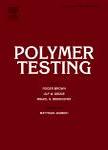版权所有:内蒙古大学图书馆 技术提供:维普资讯• 智图
内蒙古自治区呼和浩特市赛罕区大学西街235号 邮编: 010021

作者机构:Univ Sains Malaysia Nibong Tebal Sch Mech Engn Nibong Tebal 14300 Pulau Pinang Malaysia
出 版 物:《POLYMER TESTING》 (Polym Test)
年 卷 期:2025年第143卷
核心收录:
学科分类:08[工学] 0805[工学-材料科学与工程(可授工学、理学学位)] 080502[工学-材料学] 0703[理学-化学]
基 金:Ministry of Higher Education Malaysia [FRGS/1/2021/TK0/USM/02/10]
主 题:Polylactic acid (PLA) Thermoplastic polyurethane (TPU) Tensile test Printing parameters ANOVA
摘 要:Polylactic acid (PLA) is a polymer widely used for 3D printing process owing to its mechanical properties which are high strength and flexural modulus and environmentally friendly. However, PLA is also a brittle polymer with low impact resistance. This weakness can be compensated by combining PLA with other polymer like Thermoplastic polyurethane (TPU) that is widely used to improve mechanical properties of PLA. In polymer 3D printing process, printing parameters affect the thermo-mechanical properties of the printed products. This study investigates the influence of TPU and various printing parameters on thermal and mechanical properties of PLA/TPU polymer blends. It provides more precise understanding on how each printing parameters and different TPU ratio affect the mechanical and thermal properties. It also helps in determining the significant parameters for better PLA/TPU blend print. This exploration of parameter effects adds novel insights, enhancing applicability in practical 3D printing processes. Six different TPU ratio was used which are 10 %-50 % by weight while the parameters being tested are printing speed, raster angle, layer thickness and printing temperature. The differential scanning calorimetry (DSC) and thermogravimetric analysis (TGA) were conducted to assess the thermal properties while a tensile test was conducted to evaluate the mechanical properties. ANOVA analysis was employed for the data analysis. It was found that TPU altered the thermal properties of PLA by reducing the cold crystallization temperature, T-cc, enthalpy of crystallization, Delta H-c and enthalpy of melting, Delta H-m. The mechanical strength reduced by 64 % but the ductility improved up to 900 %. Based on ANOVA analysis, it can be concluded that influence of printing parameters on the mechanical properties are layer thickness printing speed raster angle printing temperature in descending order.